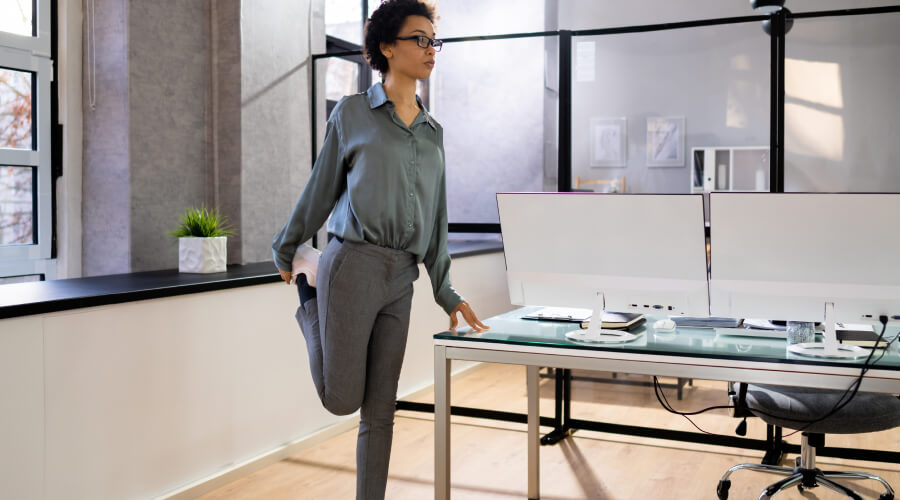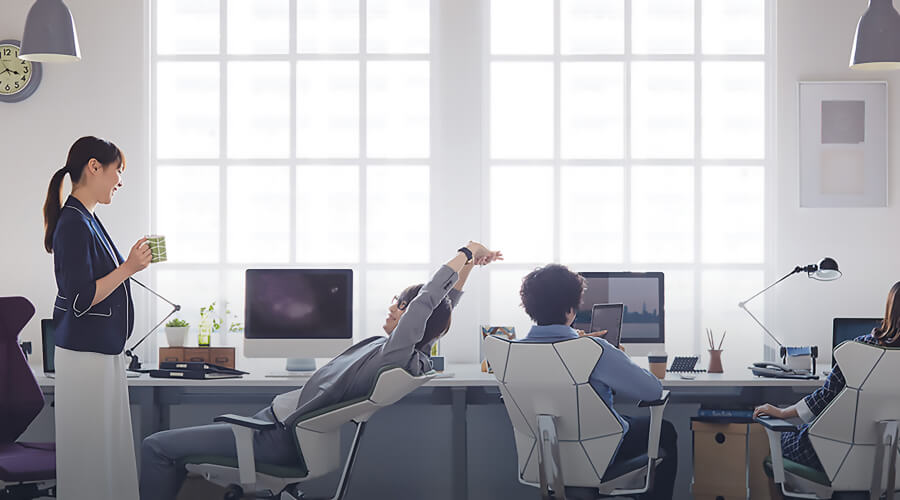Workplace Design Ergonomics

How Workplace Design Can Reduce the Risk of Varicose Veins for Employees Standing for Long Periods
Prolonged standing at work is a significant occupational risk factor for varicose veins, affecting individuals in professions such as healthcare, teaching, retail, and factory work. The increased venous pressure from long hours of standing weakens vein walls and valves, leading to venous insufficiency and varicose veins. However, workplace design modifications can play a crucial role in mitigating this risk. This article explores the relationship between prolonged standing and varicose veins and offers practical workplace design solutions to reduce the risk.
The Link Between Prolonged Standing and Varicose Veins
When employees stand for extended periods, gravity causes blood to pool in the leg veins, increasing venous pressure. Over time, this pressure weakens the vein walls and damages the valves that prevent blood from flowing backward. Studies have shown that workers who stand for more than 75% of their shifts are at a significantly higher risk of developing varicose veins. For example:
- A Danish study found that prolonged standing accounted for 22.5% of all hospitalizations due to varicose veins among working-age adults.
- Factory workers and retail employees who stand for 12-hour shifts have a higher prevalence of venous insufficiency compared to those with more dynamic roles.
Workplace Design Modifications to Reduce Risk
1. Anti-Fatigue Mats
- Why It Works: Anti-fatigue mats reduce strain on leg muscles by encouraging subtle movements that improve blood circulation.
- Implementation: Place these mats at workstations where employees stand for long periods, such as cashier counters or assembly lines.
2.Adjustable Workstations
- Why It Works: Allowing employees to alternate between sitting and standing reduces continuous venous pressure.
- Implementation: Install sit-stand desks or adjustable workstations that enable employees to change their posture throughout the day.
3. Proper Footwear
- Why It Works: Supportive footwear minimizes strain on leg muscles and improves circulation.
- Implementation: Encourage employees to wear low-heeled shoes with arch support. Avoid high heels or flat sandals that lack cushioning.

4. Leg Elevation Areas
- Why It Works: Elevating the legs above heart level reduces swelling and improves venous return.
- Implementation: Create designated break areas with recliners or footrests where employees can elevate their legs during breaks.
5. Movement-Friendly Policies
- Why It Works: Regular movement prevents blood pooling in the legs.
- Implementation:
- Encourage short walking breaks every hour.
- Organize “active meetings” where participants can walk or stretch while discussing tasks.
- Introduce workplace stretching routines, including calf raises and leg stretches.
6. Compression Stockings
- Why It Works: Graduated compression stockings enhance blood flow by applying pressure to the legs.
- Implementation: Provide or subsidize compression stockings for employees in high-risk roles, such as healthcare workers or retail staff.
7. Ergonomic Workstation Design
- Why It Works: Proper workstation height ensures good posture, reducing strain on the legs.
- Implementation: Adjust counters and desks to appropriate heights to prevent slouching or awkward leg positions.

Additional Preventive Measures
Lifestyle Changes:
- Promote regular exercise programs, such as walking or cycling, which strengthen calf muscles and improve circulation.
- Encourage healthy eating habits to maintain a healthy weight, as obesity increases venous pressure.
Education:
- Conduct awareness programs about varicose vein prevention.
- Train employees on proper posture and movement techniques.

Conclusion
Workplace design plays a pivotal role in reducing the risk of varicose veins for employees who stand for long periods. By incorporating anti-fatigue mats, adjustable workstations, supportive footwear policies, and movement-friendly environments, employers can create healthier workplaces that protect vascular health. These changes not only benefit employee well-being but also enhance productivity by reducing discomfort and absenteeism due to vein-related complications.
